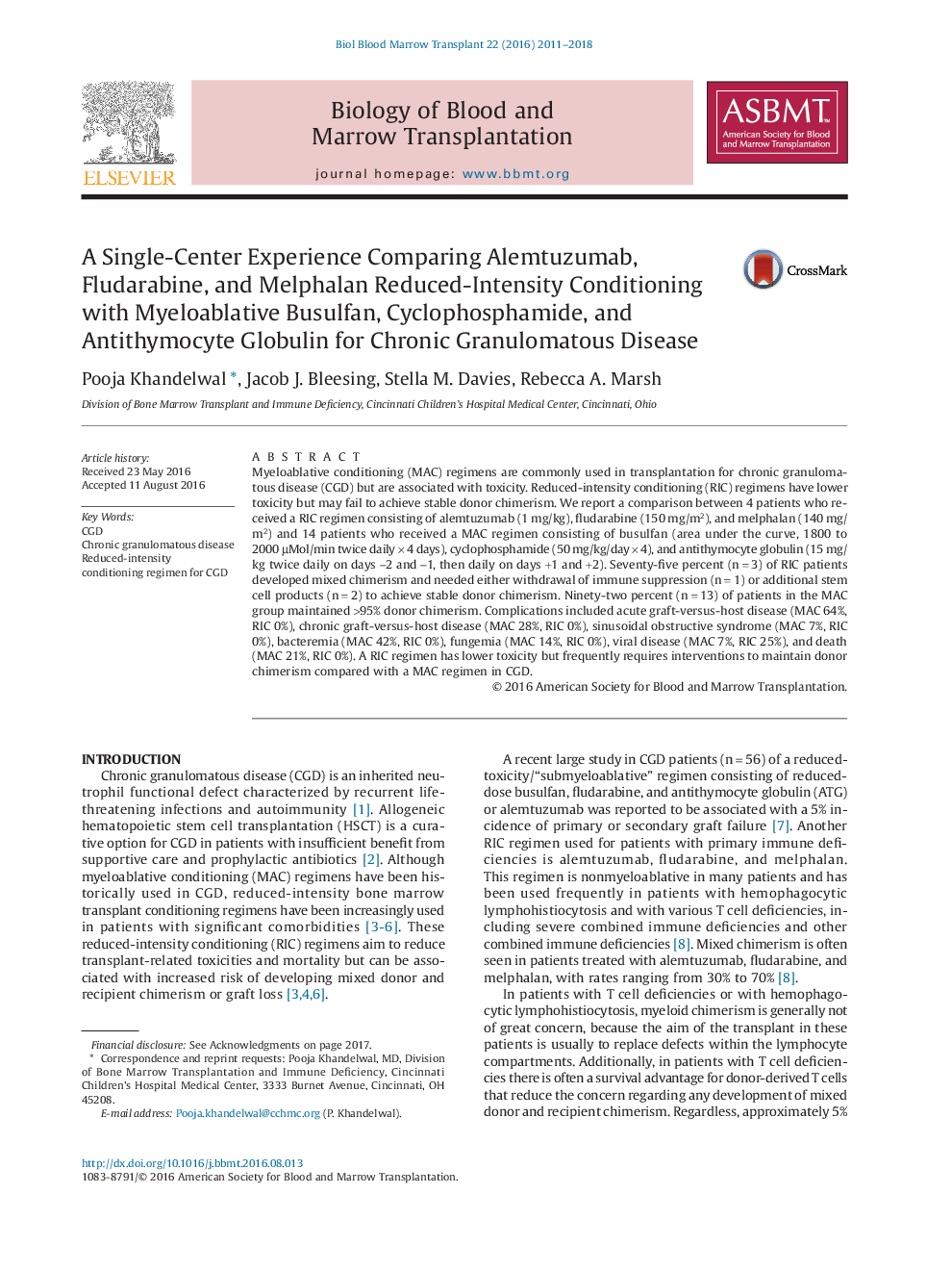| کد مقاله | کد نشریه | سال انتشار | مقاله انگلیسی | نسخه تمام متن |
|---|---|---|---|---|
| 5524151 | 1546248 | 2018 | 8 صفحه PDF | دانلود رایگان |
- Alemtuzumab, fludarabine, and melphalan have high rates of mixed chimerism in CGD but low toxicity.
- Busulfan, cyclophosphamide, and ATG are associated with >90% myeloid chimerism but high rates of toxicity.
- A lower targeted busulfan approach leads to acceptable myeloid chimerism and low toxicity in CGD.
Myeloablative conditioning (MAC) regimens are commonly used in transplantation for chronic granulomatous disease (CGD) but are associated with toxicity. Reduced-intensity conditioning (RIC) regimens have lower toxicity but may fail to achieve stable donor chimerism. We report a comparison between 4 patients who received a RIC regimen consisting of alemtuzumab (1âmg/kg), fludarabine (150âmg/m2), and melphalan (140âmg/m2) and 14 patients who received a MAC regimen consisting of busulfan (area under the curve, 1800 to 2000âµMol/min twice dailyâÃâ4 days), cyclophosphamide (50âmg/kg/dayâÃâ4), and antithymocyte globulin (15âmg/kg twice daily on days â2 and â1, then daily on days +1 and +2). Seventy-five percent (nâ=â3) of RIC patients developed mixed chimerism and needed either withdrawal of immune suppression (nâ=â1) or additional stem cell products (nâ=â2) to achieve stable donor chimerism. Ninety-two percent (nâ=â13) of patients in the MAC group maintained >95% donor chimerism. Complications included acute graft-versus-host disease (MAC 64%, RIC 0%), chronic graft-versus-host disease (MAC 28%, RIC 0%), sinusoidal obstructive syndrome (MAC 7%, RIC 0%), bacteremia (MAC 42%, RIC 0%), fungemia (MAC 14%, RIC 0%), viral disease (MAC 7%, RIC 25%), and death (MAC 21%, RIC 0%). A RIC regimen has lower toxicity but frequently requires interventions to maintain donor chimerism compared with a MAC regimen in CGD.
Journal: Biology of Blood and Marrow Transplantation - Volume 22, Issue 11, November 2016, Pages 2011-2018
